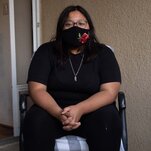
Mr. Sawyer, who wants to become a pastor, is using his time off to work for civil rights organizations and to fund-raise so that he can re-enroll in the spring and
obtain a doctorate in theology. “It’s definitely a delay, but sometimes stumbling blocks come,” he said.
Many students like Mr. Sawyer have been looking for alternative ways to pay for their education. As the coronavirus was closing campuses this past spring, Rise, a student-led organization that advocates college affordability, created an online network to help students find emergency financial aid, apply for public benefits and locate food pantries.
Rise has continued to serve more than 1,000 students a month who have struggled to pay rent, keep jobs and secure internet access, said Max Lubin, the organization’s chief executive. “We’re overwhelmed by the need,” he said.
Stable housing and healthy food were already major concerns before the pandemic. A 2019 survey found that 17 percent of college students had experienced homelessness in the past year, and about half reported issues such as difficulty paying rent or utilities. Nearly 40 percent lacked reliable access to nutritious food.
The coronavirus crisis worsened many of these challenges, according to a June report by the Hope Center, which found that nearly three out of five students surveyed had trouble affording basic needs during the pandemic.
School Reopenings ›
Back to School
Updated Oct. 8, 2020
The latest on how schools are reopening amid the pandemic.
-
- Notre Dame’s president faces an angry campus after getting the coronavirus and failing to wear a mask at a White House ceremony.
- At historically Black colleges and universities, homecoming is part family reunion and part revival. It’s cancelled this year, but you can revisit past glories.
- Imagine running a K-7 school. By yourself. In your own home. Meet the Crawfords in the first installment of our weekly “Family, Interrupted” series.
- Here’s an awkward campus job: Telling other students to wear masks.
Financial aid in the United States had already been stretched thin by the rising costs of tuition, room and board. At their maximum, need-based federal Pell grants cover 28 percent of the total cost of attending a public college today, compared with more than half of that cost in the 1980s. State aid, while recovering somewhat since the Great Recession, still falls short of need, and state budgets have been further drained by the health crisis.
The CARES Act, passed by Congress in March, provided about $14 billion for higher education, with about half earmarked for students. But there were limits on who could receive it, and college students were ineligible for the $1,200 stimulus check that went to taxpayers.